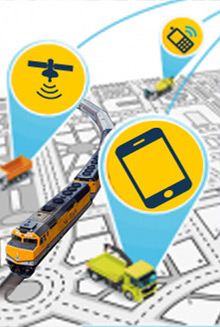With the explosion of radical disruptive technologies such as Big Data, Mobility, Cloud Computing and Social Media, communication has been increasingly redefining itself to fit into an evolving, interdependent, multifaceted business ecosystem. From ‘voice’ being the protagonist a couple of years back, it has merely become a piece in the communication puzzle today. Communication as we know it today, has become more virtual than ever before. We rarely find the need to travel all the way back home or to office to say, send a mail or upload a picture or update our Twitter profile. Conversely, with the help of Unified Communication, we can multitask and much more, as and when we’re on the move, saving a considerable amount of time, cost, effort and space, consequently enhancing productivity.
So then, what is it that allows us to communicate not just efficiently, but also effectively? What is the one mutual thing that has transcended the dynamics of all- things-communicative today? The answer is as simple as a cohesive architecture that integrates all communication tools into a single hardware, thus letting both, businesses and individuals communicate, regardless of where they are, which device they own and what the content maybe. With changing compliance & regulatory norms, competition strategies and social media landscapes, the need for a comprehensive communication architecture is much called for than ever before.
Unified Communication provides superior competitive edge for enterprises in the marketplace by uniting workforce, avoiding every communication gap there possibly could be. It also minimizes common response time, or in other words, perceived speed, which is essential in decision making and acting upon instructions. However, apart from these, Unified Communication provides an array of multi-dimensional benefits for both, businesses and enterprises like the following:
- It shortens decision-cycle time
- It improves customer responsiveness
- It collaborates working environment
- It eliminates location dependence
- It eliminates device dependence
- It enhances employee productivity
- It reduces cost/effort of support
- It integrates business applications
- It minimizes capital and operational expenditure
Considering we are in the era of digital transformation, another tangent where Unified Communication has been playing a vital role is e-commerce. Unified Communication enables human-assistance to bring knowledgeable sales team to online customers on real-time, thus delivering superior interactive experience and driving sales.
Apart from providing seamless integration and compatibility across devices, an ideal Unified Communication Service model would have a comprehensive lifecycle that provides emphasis to every step of the same, like the following:
Preparation: A Unified Communication model provides vision for the future and consults for its planning as a part of the business.
Plan: It delivers precise assessments and architecture of the communication algorithms for the future.
Design: An ideal Unified Communication model builds design metrics to both, foresee and preempt potential vulnerabilities.
Implementation: Unified Communication ensures proper development of design and development. It delivers the desired values and functionalities across networks.
Operation: It continually provides incident support and network investment protection.
Optimization: It keeps in touch with the market and automatically updates itself with the latest applications, software and interfaces available.

Suresh Kanniappan, Heads the Global Practice for Unified Communications in Happiest Minds Technologies.
Suresh has about 17 plus years of IT experience and have performed various roles in solutions and platform development.
Some of the platforms he has developed on open source technologies are focused towards End user experience on unified communication





